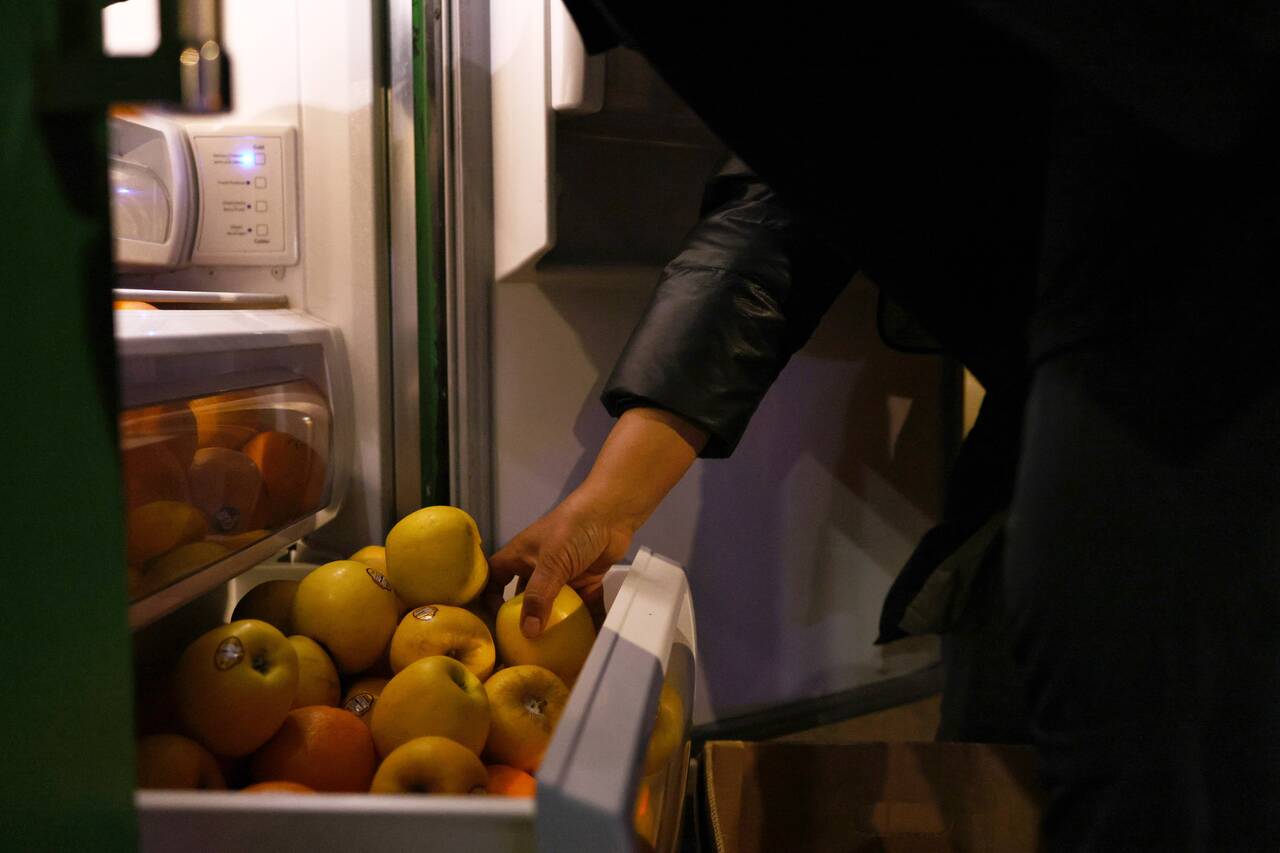US environment agency to announce sharp limits on powerful greenhouse gases
Sign up now: Get ST's newsletters delivered to your inbox

The EPA aims to reduce the production and importation of hydrofluorocarbons, which are used in refrigeration and air-conditioning, over the next 15 years.
PHOTO: AFP
Follow topic:
WASHINGTON (NYTIMES) - The Environmental Protection Agency (EPA) on Monday (May 3) took its first significant step under President Joe Biden to curb climate change, moving to sharply reduce a class of chemicals that is thousands of times more potent than carbon dioxide (CO2) at warming the planet.
In proposing a new regulation, Mr Michael Regan, the EPA administrator, said the agency aimed to reduce the production and importation of hydrofluorocarbons (HFCs), which are used in refrigeration and air-conditioning, in the United States by 85 per cent over the next 15 years. It's a goal shared by environmental groups and the business community, which jointly championed bipartisan legislation passed by Congress in December to tackle the pollutant.
"This action is good for our planet and our economy," Mr Regan said in a statement. He framed the move as good for US businesses, saying it would "help promote American leadership in innovation and manufacturing of new climate-safe products."
The move is important because it will be the first time the federal government has set national limits on HFCs, which were used to replace ozone-depleting chlorofluorocarbons in the 1980s but have turned out to be a significant driver of global warming. More than a dozen states have either banned HFCs or are formulating some restrictions.
The speed with which the EPA is proposing the regulation underscores the level of attention the Biden administration is giving to climate change, said Mr Francis Dietz, vice-president for public affairs at the Air-Conditioning, Heating and Refrigeration Institute, a trade group.
"They're really moving swiftly," he said. "It says they're very serious about this."
In communicating the gains it says will be realised by tackling climate change, the EPA estimated that the HFC rule would result in US$283.9 billion (S$380 billion) in health and environmental benefits by the middle of the century.
The effort is part of Mr Biden's ambitious strategy to cut the country's greenhouse gas emissions roughly in half by 2030. It also puts the US in line with an international goal to reduce HFCs, which the Biden administration has said it will honour as part of its effort to revive American leadership in tackling climate change.
Like methane, HFCs have short-term warming effects far more powerful than CO2, but they don't stay in the atmosphere as long. Scientists have estimated that reducing these types of greenhouse gases can have a palpable impact, slowing the pace of global warming by 0.6 deg C by mid-century.
"This is incredibly significant," said Ms Kristen Taddonio, a senior climate and energy adviser for the Institute for Governance and Sustainable Development, an environmental nonprofit group. "By taking fast action on these short-lived climate pollutants, of which HFCs are the most potent, we can buy ourselves some time and actually help avoid climate tipping points."
As part of a sweeping coronavirus relief bill, Congress last year approved language directing the EPA to curb HFCs. Democratic Senator Chuck Schumer, who at the time was the minority leader, called it "the single biggest victory in the fight against climate change to pass this body in a decade".
The EPA estimates that, from 2022 to 2050, the rule will eliminate the equivalent of 4.7 billion tonnes of CO2, or about three years' worth of emissions from America's power sector.
Mr David Doniger, senior strategic director of the Natural Resources Defence Council's climate and clean energy programme, called eliminating HFCs "absolutely critical" to ensuring that global average temperatures stay at relatively safe levels.
"If your goal is to keep the total warming to 1.5 deg (Celsius), you cannot do that if you add another half-degree of HFCs on top of everything else," he said.
The agency said it had performed an "environmental justice analysis" that found cuts to planet-warming emissions "would benefit populations that may be especially vulnerable to damages associated with climate change, such as the very young, elderly, poor, disabled and indigenous populations".
Under the plan, the EPA will set a baseline for the amount of HFCs that are produced and consumed, and use that to establish a cap on the levels that can be created and imported into the US. The agency will then establish a methodology for allocating allowances to companies to continue producing and importing HFCs for the years 2022 and 2023, as well as developing an enforcement system.
Under the law, allowances to companies will gradually decrease as the market for alternatives grows.
Echoing an economic theme that Mr Biden has repeatedly promoted when discussing his climate plans, the EPA said that US manufacturers were at the forefront of developing HFC alternatives and that the new regulations would position these companies to succeed at home and abroad.
Mr Dietz said he hoped that federal regulation meant companies would not face a patchwork of HFC prohibitions in different states.
"This is a big signal to the states that the administration takes this seriously and the federal government takes this seriously," he said.
In the last days of the Obama administration, 197 nations, including the US, signed an accord in Kigali, Rwanda, agreeing to phase out HFCs. President Donald Trump never brought the agreement to the Senate for ratification. Biden, who has returned the US to the Paris Agreement on climate change, has pledged to send the Kigali amendment to the Senate for approval.

